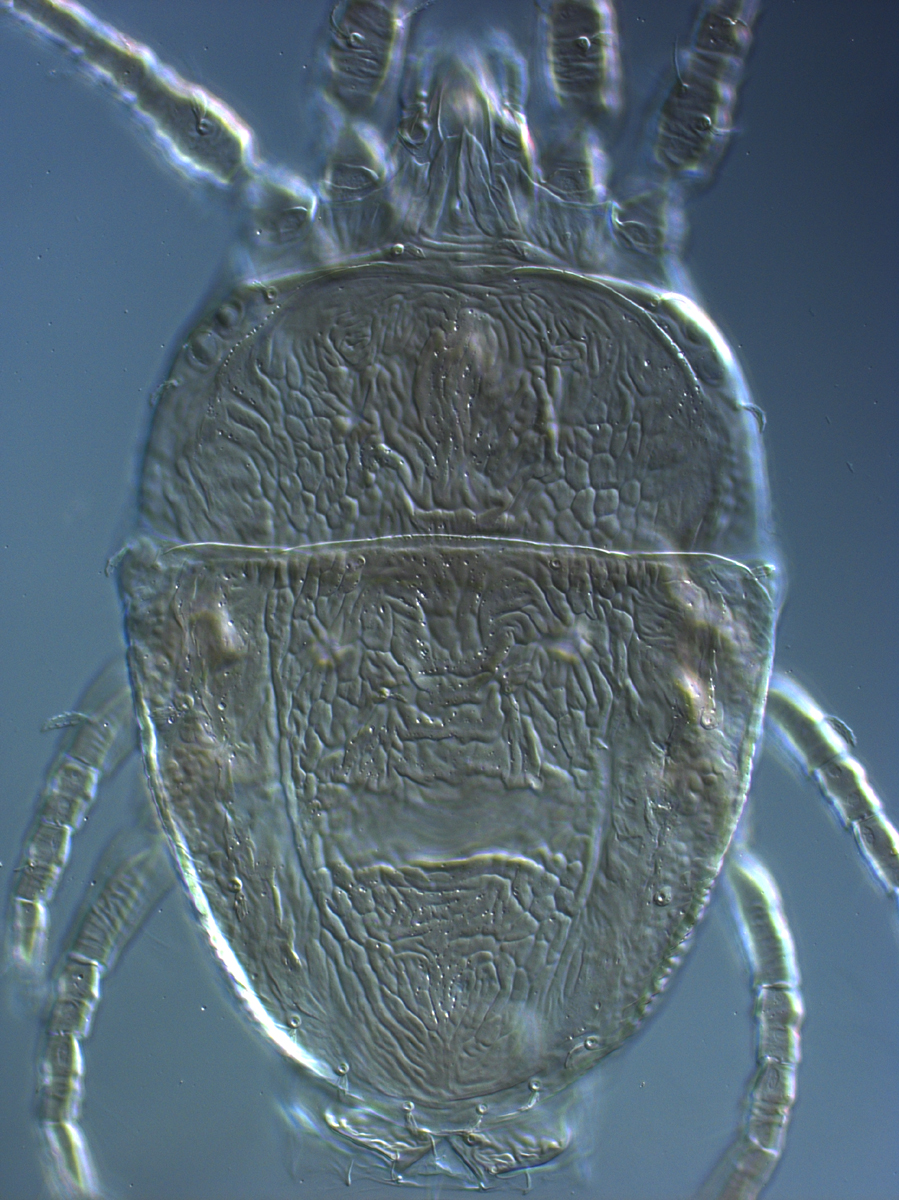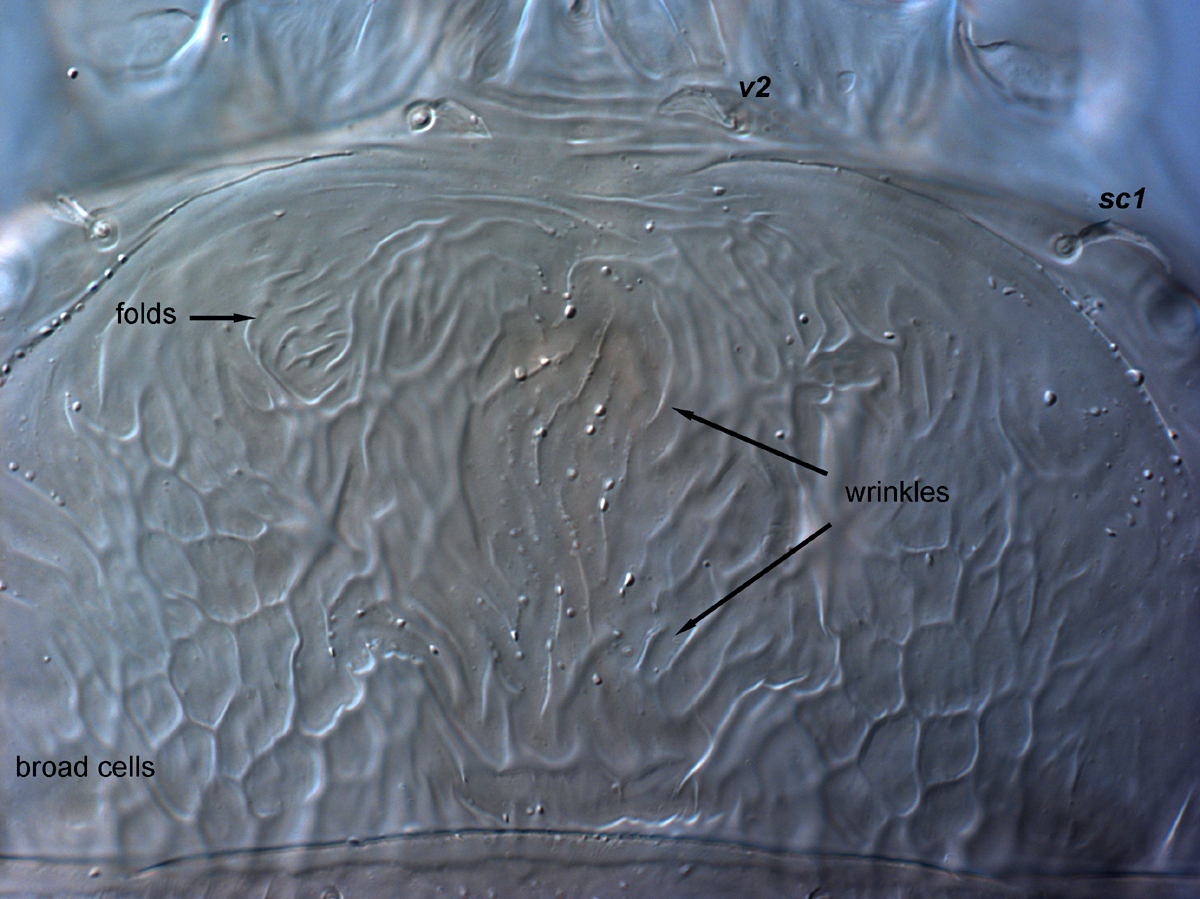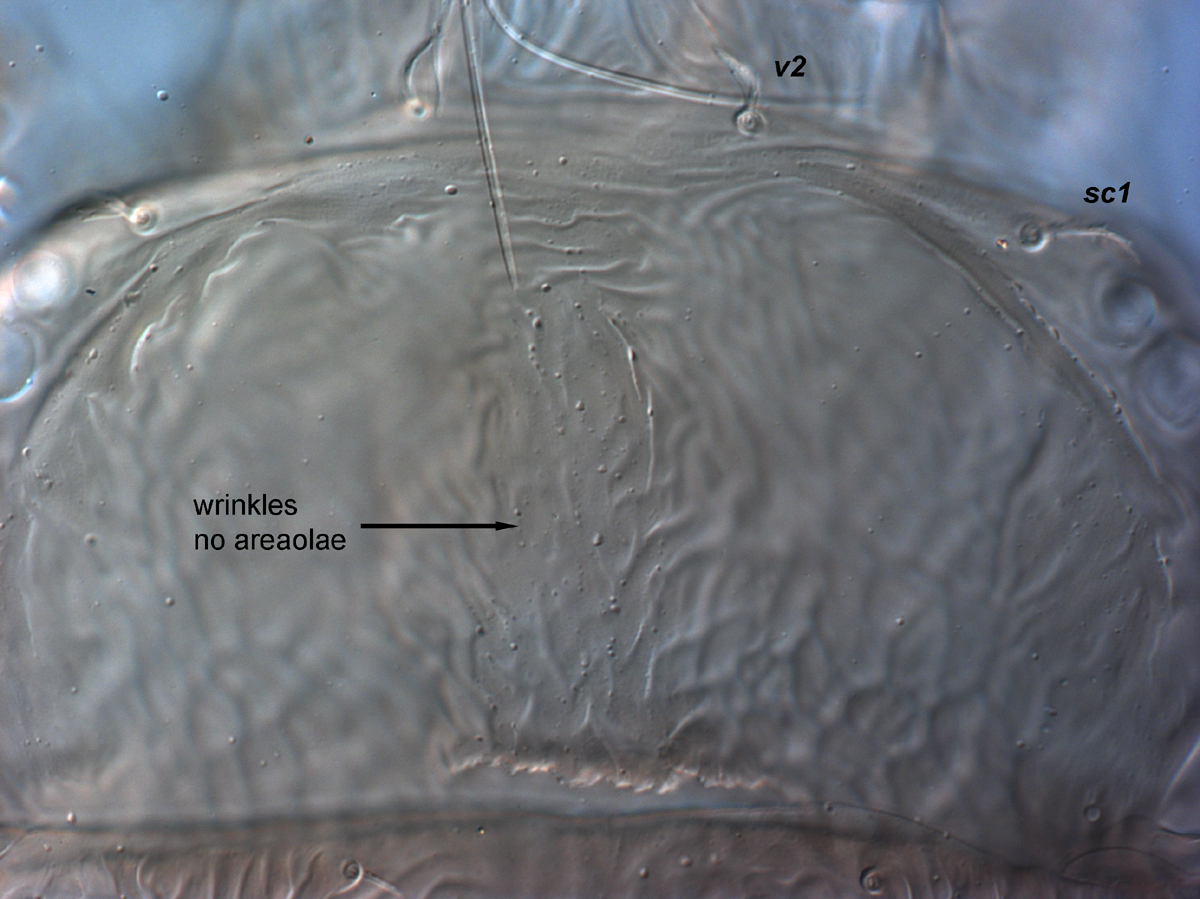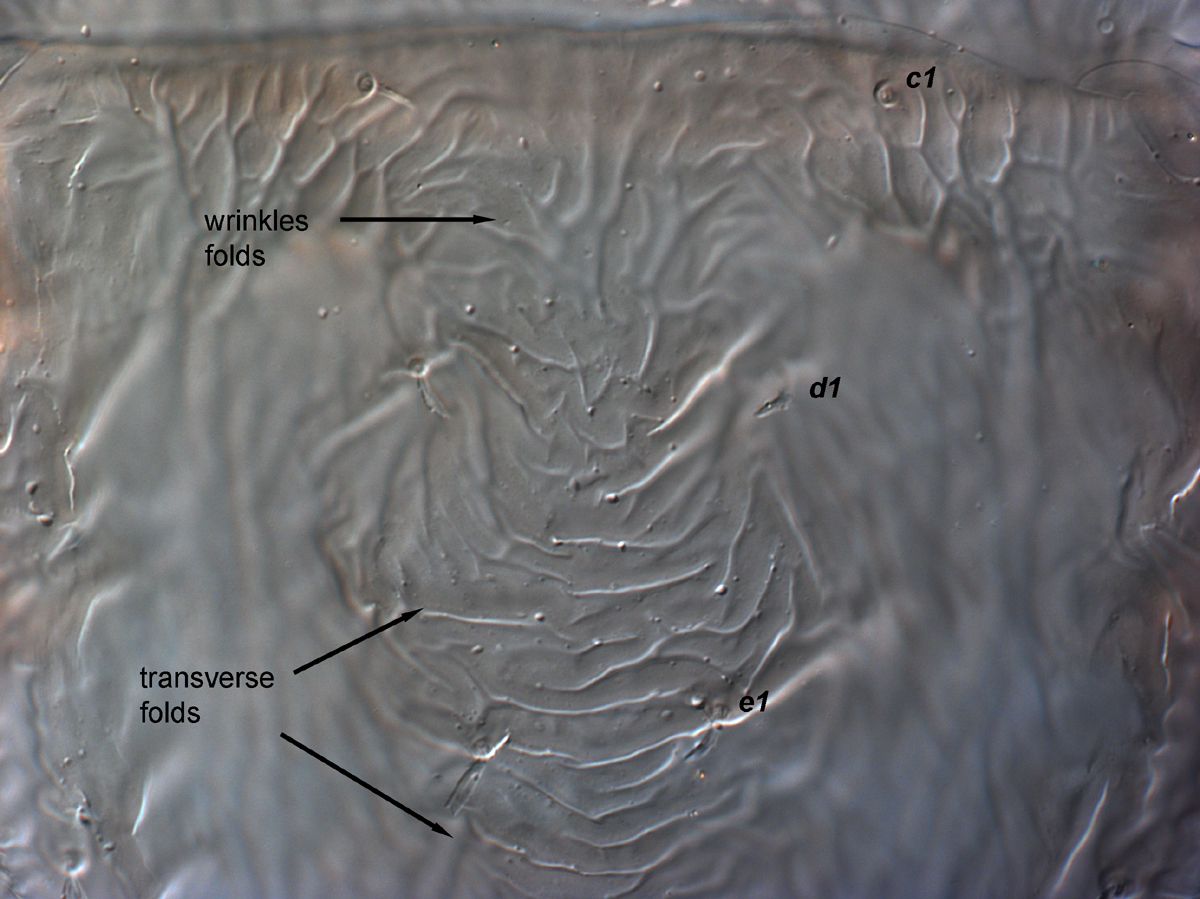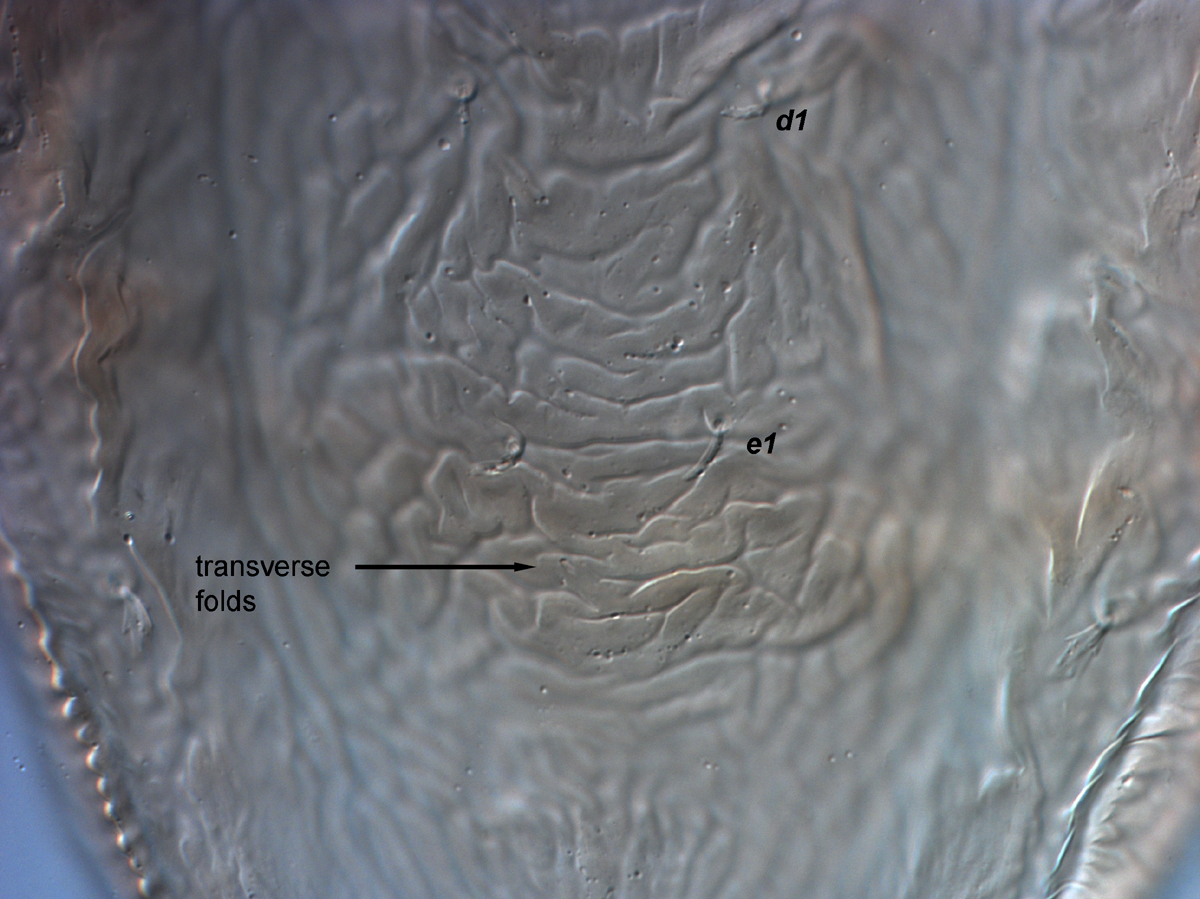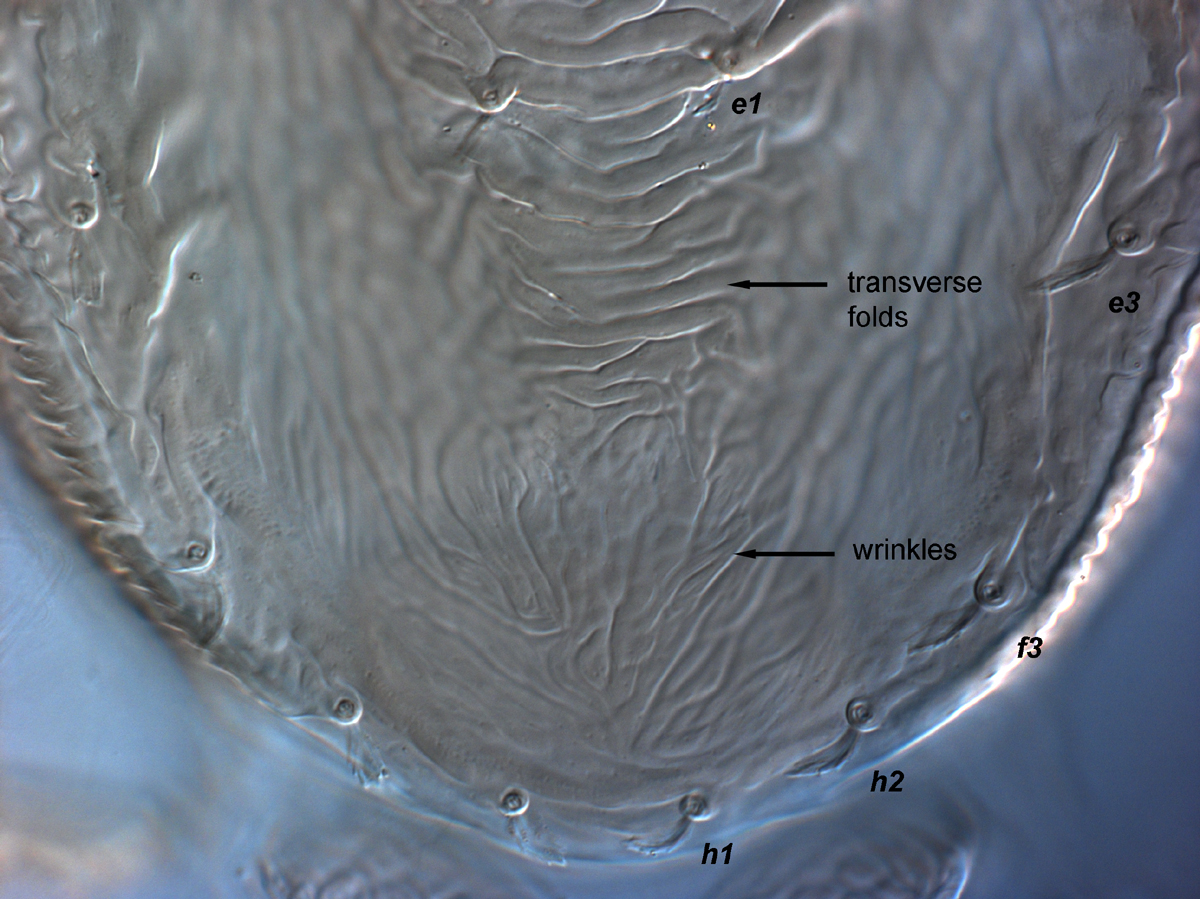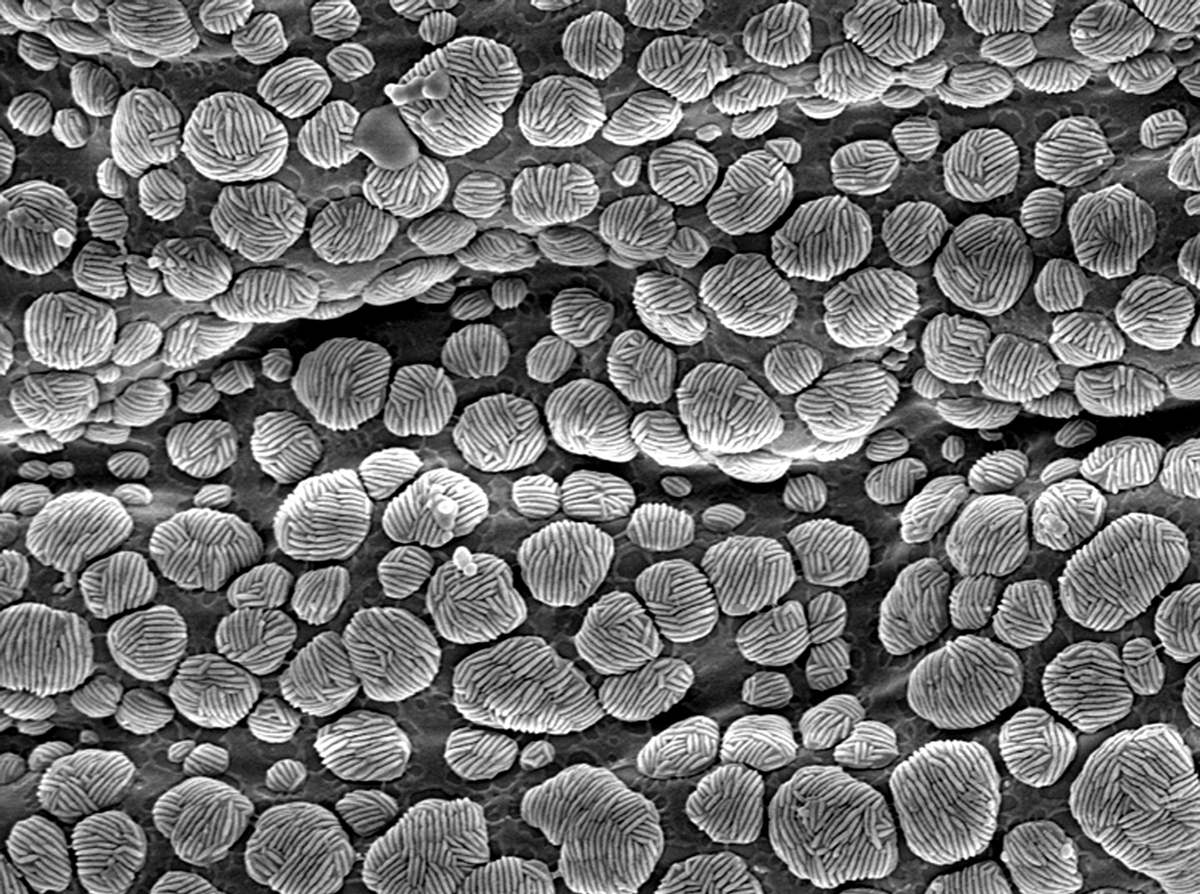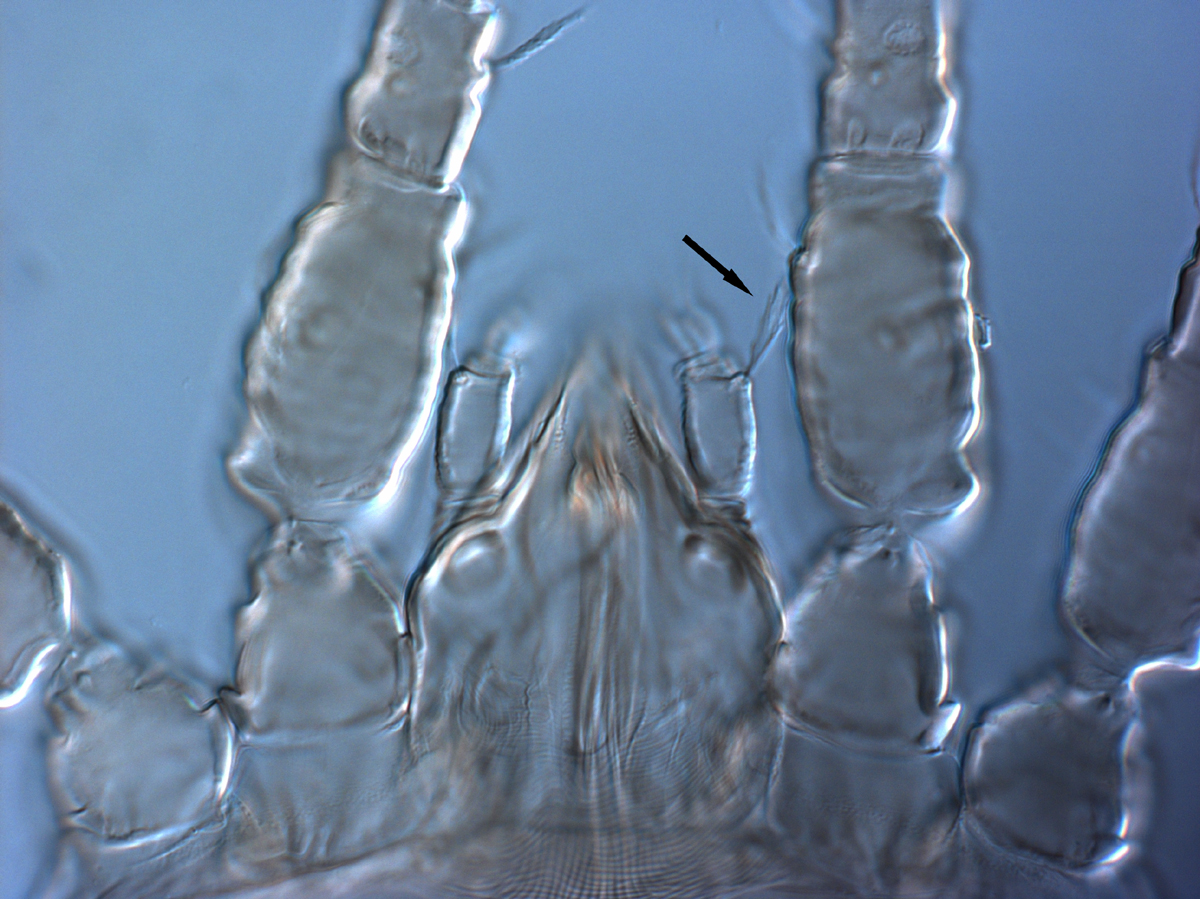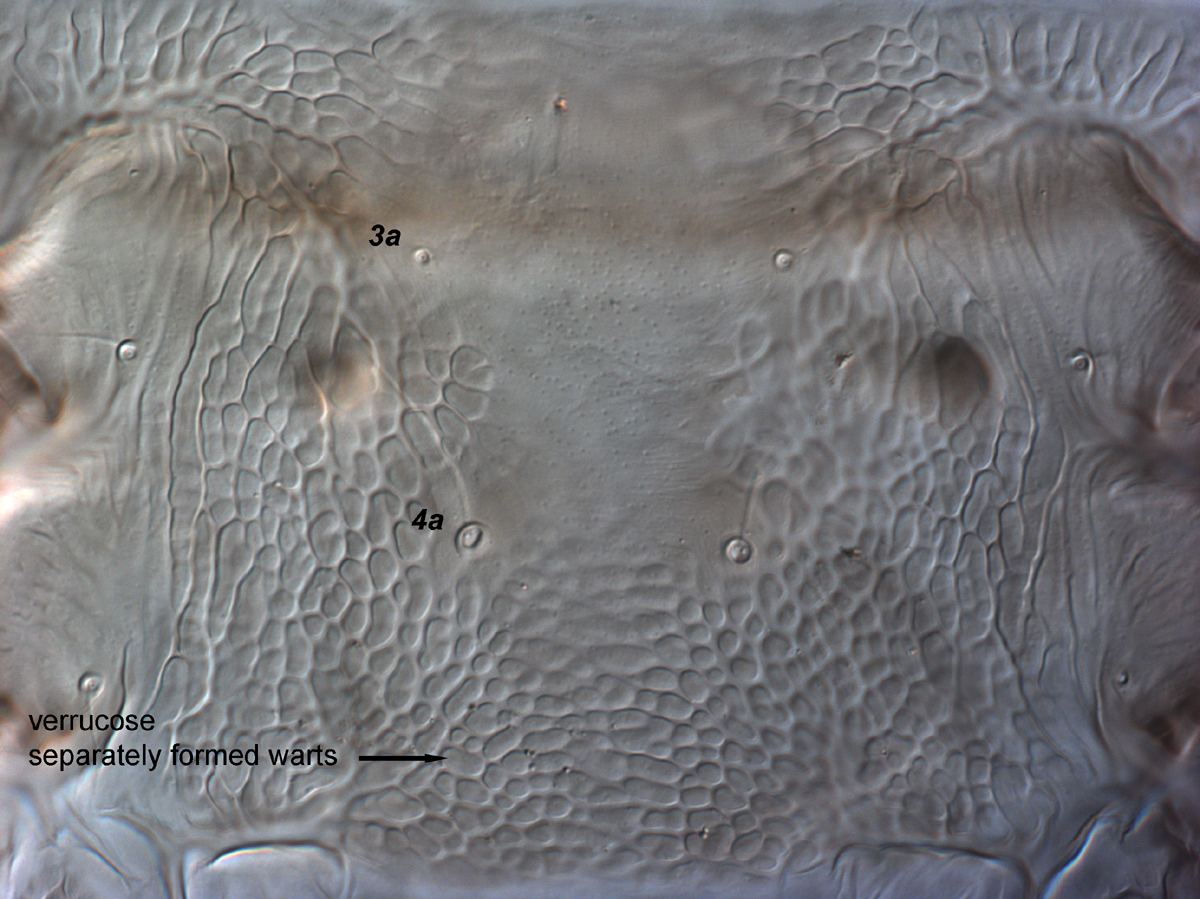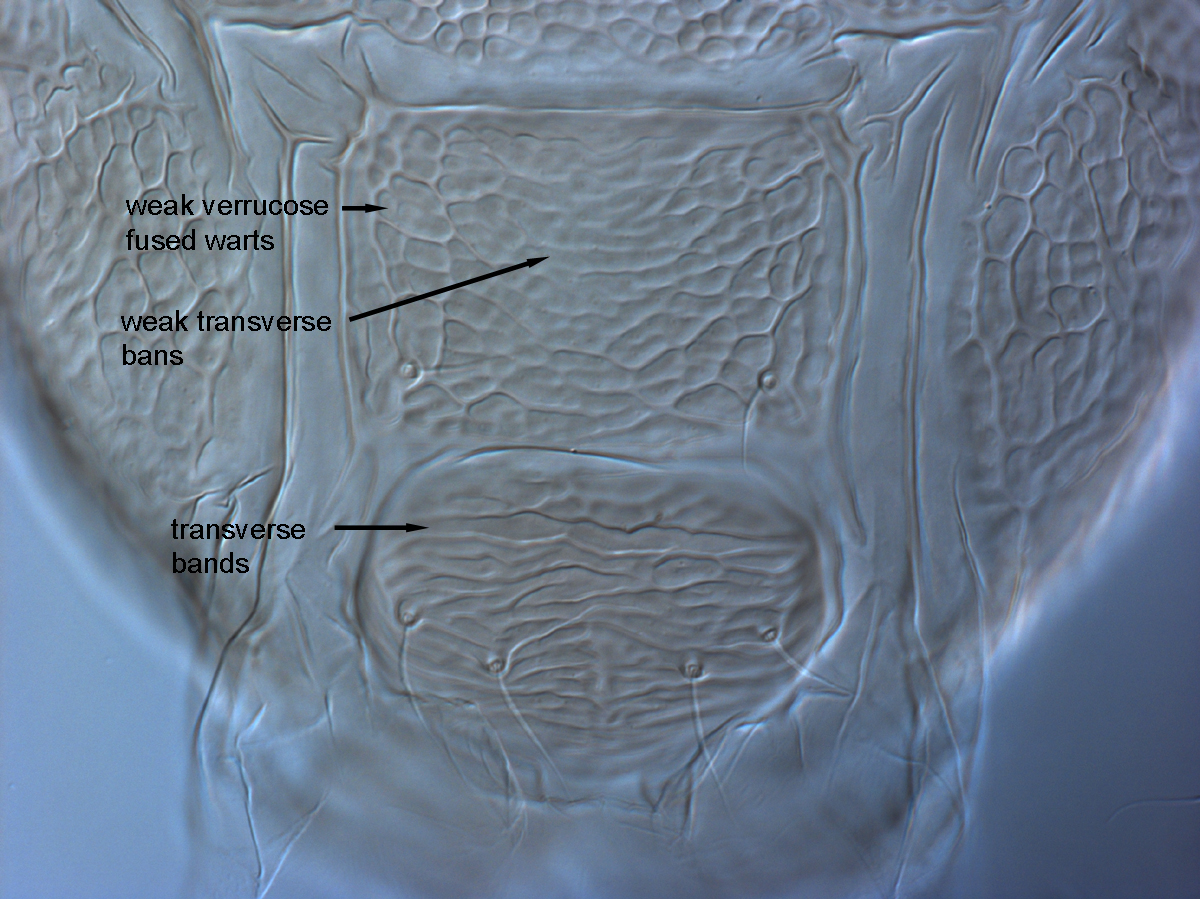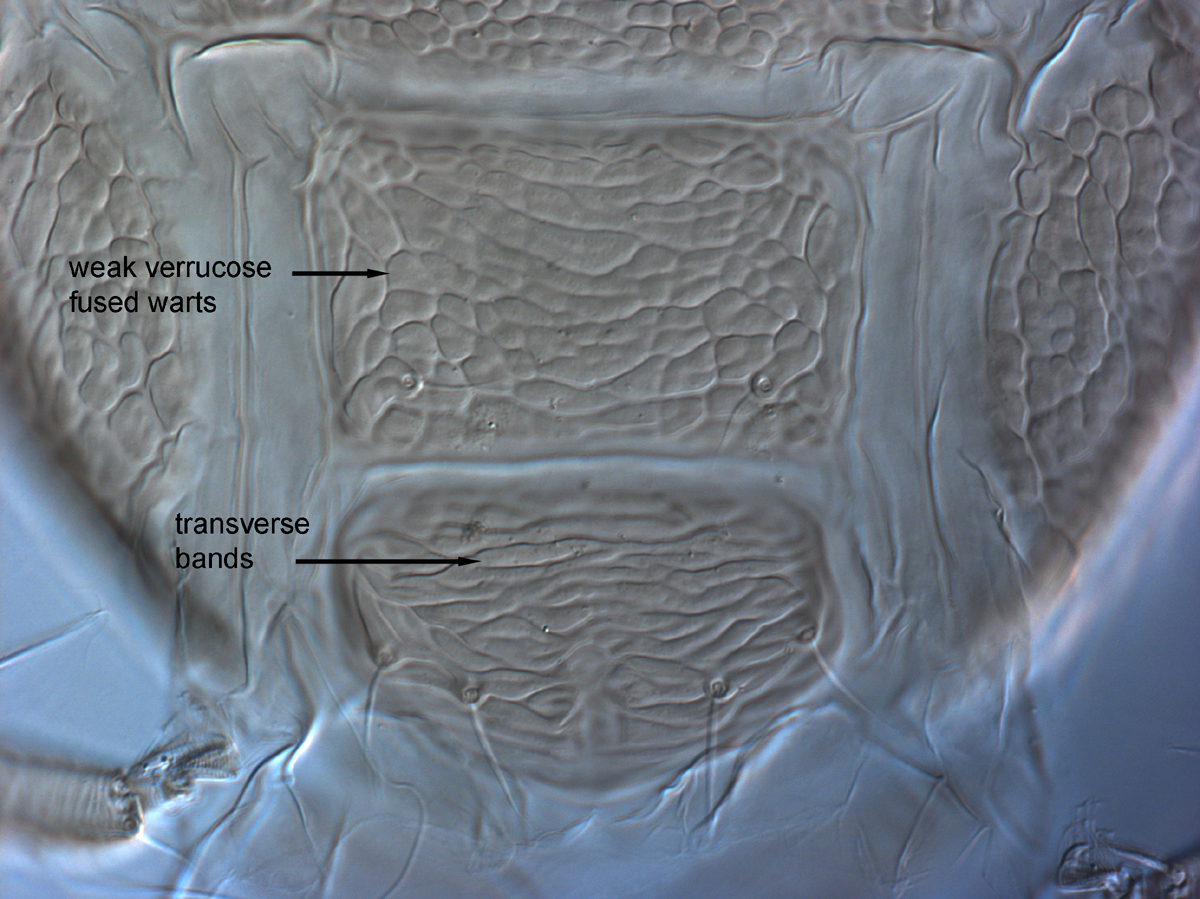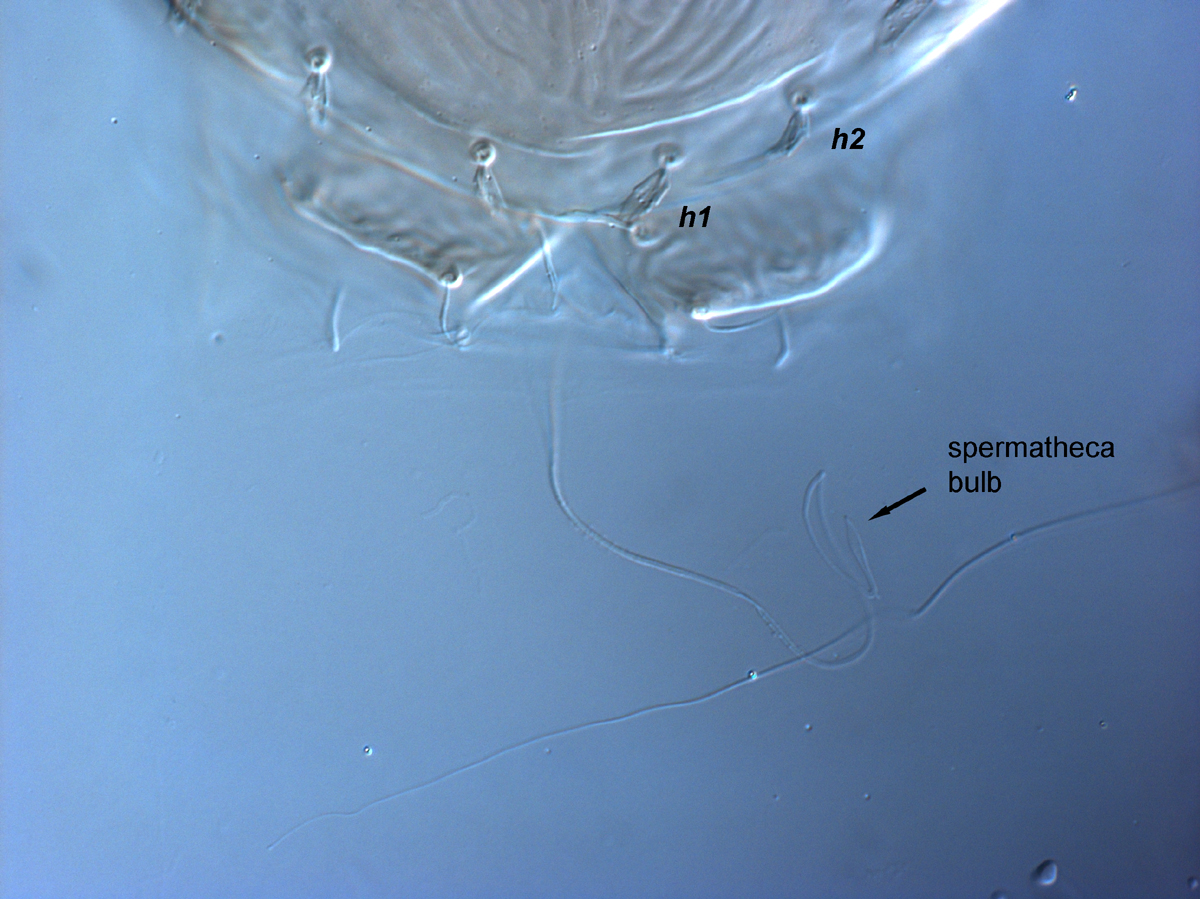Brevipalpus ferraguti
|
Fig. 1. Brevipalpus ferraguti, adult female dorsum. |
|
Fig. 2. Brevipalpus ferraguti, female prodorsum. |
|
Fig. 3. Brevipalpus ferraguti, female prodorsum. |
|
Fig. 4. Brevipalpus ferraguti, female anterior dorsal opisthosoma. |
|
Fig. 5. Brevipalpus ferraguti, female central dorsal opisthosoma. |
|
Fig. 6. Brevipalpus ferraguti, female posterior dorsum. |
|
Fig. 7. Brevipalpus ferraguti, female microplates on dorsal cuticle (15,000 X) (Image taken by G. Bauchan, USDA-ECMU). |
|
Fig. 8. Brevipalpus ferraguti, dorsal seta on palp femurogenu (indicated by arrow). |
|
Fig. 9. Brevipalpus ferraguti, female venter, between coxae III-IV. |
|
Fig. 10. Brevipalpus ferraguti, female posterior venter. |
|
Fig. 11. Brevipalpus ferraguti, female posterior venter. |
|
Fig. 12. Brevipalpus ferraguti, female spermatheca, arrow indicating distal bulb. |
Authority
Ochoa & Beard
Species group characters
Brevipalpus phoenicis species group
Dorsal opisthosomal setae f2 absent; tarsi II with 2 solenidia (one adaxial, one abaxial). Palps four segmented, setal formula 0-1-2-3(1s+2e) (s = solenidion, e = eupathidium).
Setal formula for legs I-IV (coxae to tarsi): 2-2-1-1, 1-1-2-1, 4-4-2-1, 3-3-1-1, 5-5-3-3, 9(1)-10(1)-5-5. Leg chaetotaxy: feI-II d, l', v', bv", fe III d, ev', fe IV ev'; ge I-II d, l', l", ge III-IV l'; ti I-II d, l', l", v', v", ti III-IV d, v', v".
Distribution based on confirmed specimens
Spain
Species characters
Adult female habitus
Figure 1
Prodorsum
Central (Figs. 2, 3): cuticle with wrinkles or fine folds, longitudinally oriented; cuticle without areolae
Sublateral (Figs. 2,3): posterior region with reticulation forming large cells; anterior region with weak reticulation becoming folds
Opisthosoma
c1-c1 to d1-d1: cuticle with strong wrinkles and folds; may appear weakly reticulate (Fig. 4)
d1-d1 to e1-e1: cuticle with strong wrinkles and folds, becoming a series of short narrow transverse folds (Fig. 5)
e1-e1 to h1-h1: cuticle with series of short narrow transverse folds; cuticle becoming weakly reticulate towards h1 (Figs. 5, 6)
Sublateral: anterior cuticle reticulate with regular cells becoming longitudinally elonagate towards posterior (Figs. 4, 6)
Dorsal microplates
Separate individual rounded to oblong plates, with multiple series of distinct parallel ridges on dorsal surface aligned in multiple directions (Fig. 7)
Palp
palp femur with barbed, broad flat dorsal seta (Fig. 8)
Venter
Setae 4a-ventral plate (Fig. 9): cuticle entirely verrucose, with separately formed rounded "warts"; central cuticle often with fused "warts" forming elongate "warts"
Ventral plate (Figs. 10, 11): cuticle weakly verrucose or weakly reticulate with rounded to transversely elongate cells; central cuticle with some fused "warts" forming a few weak transverse bands
Genital plate (Figs. 10, 11): with uniform narrow transverse bands
Spermatheca
A long narrow duct, ending in an elongate membranous bulb (Fig. 12)
Hosts based on confirmed specimens
Myoporum laetum (Scrophulariaceae)
Remarks
Previously listed as Brevipalpus phoenicis species group sp. F.
Beard, J.J., Ochoa, R., Braswell, W.E. & Bauchan, G.R. (2015) Brevipalpus phoenicis (Geijskes) species complex (Acari: Tenuipalpidae) — a closer look. Zootaxa, 3944(1), 1-67. (open access: http://www.mapress.com/zootaxa/list/2015/3944%281%29.html)

